Explosive Delays
Dredging work in and around Portsmouth Harbour in preparation for the new 65,000gt aircraft carriers has thrown up a few surprises in the form of unexploded ordnance. The most disruptive occasion to date was on 16th November when an unexploded WWII 500lb bomb was discovered in the harbour. The timing of the find prevented the early morning arrivals of the Commodore Clipper, Normandie, Bretagne and Cap Finistere from accessing the Continental Ferry Port. All waited in the eastern Solent until late morning when their passage to the port was cleared. At this point the Isle of Wight and Gosport Ferry services were unaffected. However, the harbour was then completely closed to all services and Gunwharf Quays was evacuated among other areas just after midday. The ordnance was then towed out into the eastern Solent and to 1.5 miles off the Island where a controlled explosion took place. The outward sailing of the Commodore Clipper (above) was cancelled due to the disruption. Wightlink Ferry services recommenced from 1500 following the closure that came into force from 1209. Because of the closure, the 1147 Wightlink catamaran service from Ryde Pier Head to Portsmouth Harbour returned to Ryde with its customers.
Makeover for North Sea Stalwarts
In a major boost for the service, P&O Ferries announced on 28th November that it will spend £8.5 million on upgrading the two ships on its Hull-Zeebrugge route in a move which guarantees the future of the Ro-Pax service into the next decade. The 31,785gt/1987 built Pride of York (above) and the 31,598gt/1987 built Pride of Bruges, each with a capacity of 880 passengers on their overnight sailings to and from the continent, will benefit from the major investment in their physical infrastructure and passenger areas. The objective is to provide first class dining, drinking and shopping areas for freight customers and tourist passengers to enjoy during the 12 hour voyage. The upgrade refits will be undertaken by the Remontowa shipyard in Poland. In the cabins, upgrades will include the lighting, bedding and en-suite bathrooms in addition to installing enhanced temperature control and ventilation so that passengers have a comfortable night’s sleep. The premium Club class cabins will benefit from a complete refurbishment, including new carpets, curtains and furniture. The Kitchen dining area, which hosts an all-you-can-eat buffet, will be given an informal, family friendly feel whilst the Brasserie will be refurbished to provide a premium dining experience at affordable prices. The onboard retail areas will also receive a revamp. P&O Ferries formally opened its expanded terminal at Zeebrugge on 16th November which doubles capacity so that the ferry and logistics company can meet rising demand from continental exporters to Britain. From its Zeebrugge hub, P&O Ferries operates services across the North Sea to Tilbury, Hull and Teesport respectively. It also operates incoming rail services to the Belgian port from Central and Eastern Europe. The terminal has now been enlarged by 14 hectares, comprising a fourth berth and significantly enhanced rail infrastructure. P&O will have the capacity to conclude new partnerships such as the existing one with Swedish Orient Line, which links the Zeebrugge hub to Gothenburg, and by extension Gothenburg with the east coast of Britain. P&O Ferries this year celebrated the 50th anniversary of its operations in the Belgian port.
Damen Delivers
It was announced on 30th November that Miraejet Co. Ltd. named its Damen Fast Ferry 4010 JET the Nina (above) at an official launching ceremony held at the Busan International Ferry Terminal in the Republic of Korea on 6th October. The Nina was named after one of the ships deployed on Christopher Columbus’ first voyage to the West Indies. The order for the 440-passenger, Damen Fast Ferry 4010 JET was fulfilled in just four months thanks to Damen’s speculative building policy. Miraejet Co. Ltd., a well-known ferry company in Korea, will operate the new vessel between Busan and Tsushima Island, Japan, a very popular tourist destination. The Damen 4010 is compact at only 40m long and has a capacity for 440 passengers and 10 crewmembers. The Damen 4010 is fitted with twin MJP 650 waterjets, enabling the vessel to operate at 34 knots. Two MTU 16V4000 main engines with a 1A rating are installed, which only need to be overhauled every 24,000 hours. This leads to a substantial reduction in maintenance costs when compared to other fast ferries. A cargo room was added to the upper deck at the operator’s request. Six fast ferries have been delivered to South Korea since 2011, four Fast Ferry 4212 variants and another Fast Ferry 4010.
Stena News
Stena Line plans to upgrade its services in Central Europe and Scandinavia by implementing an enhanced ferry timetable and introducing an additional ship due to rapidly increasing demand. Ventspils in Latvia will be positioned as the gateway to Scandinavia, thus reinforcing the Ventspils- Nynäshamn route. The 26,904gt/2008 built Stena Flavia will be permanently allocated to this service, joining fellow 26,904gt/2009 built Visentini stablemate Scottish Viking, thus increasing capacity by 30%. Starting from 3rd January 2017, 24 crossings per week will be offered instead of the original 18. The Ventspils to Travemünde service will be re-routed to Liepaja, Latvia. In turn, Liepaja will be the main port connecting Latvia to the western part of Central Europe. An additional ferry will be introduced to this route, increasing the number of crossings by 25%, in the form of the 24,206gt/2000 built Stena Nordica, as from 3rd January. The ship, formerly chartered to GNV and DFDS Seaways prior to that (as the Malo Seaways) joins the 13,144gt/1981 built Urd. The Stena Nordica will not be available immediately as she has relief duties to fulfil so the 13,294gt/1982 built Stena Gothica will act as relief ship. The last ferry from Liepaja to Nynashamn departed on 28th November. The Stena Nordica had departed Barcelona on 15th November painted all white having completed her GNV charter. The 24,828gt/1981 built Rosslare-Fishguard ferry Stena Europe was stranded at sea for 27.5 hours, finally being able to berth at Fishguard at around 11am on 22nd November with 87 passengers and 59 crew aboard. The ship had sailed from Rosslare the previous morning but was unable to dock due to worsening conditions and was instead forced to take a northerly route to ride out the storm in Cardigan Bay. The 64,039gt/2010 built Stena Britannica was dry docked for routine overhaul maintenance at Damen Shiprepair in Schiedam, being released on 12th November. During her refit she received exhaust scrubbers and therefore a slightly revised funnel profile. In November the 29,691gt/1996 built Stena Jutlandica was depicted as carrying the revised company legend “Santa Line” on her hull as part of the annual Christmas marketing transformation of Stena Line to Santa Line.
Viking Newbuild

On 23rd November Viking Line Abp signed a letter of intent with the Chinese company Xiamen Shipbuilding Industry Co. Ltd concerning an order for a passenger vessel (above) to be delivered in the spring of 2020. The aim is to sign a final agreement during the spring of 2017. The total investment is about 190 million Euros. The letter of intent also includes an option for an additional vessel.
The vessel is intended to be a collaborative project and will include a number of Finnish and other European suppliers, including Deltamarin, Wärtsilä and ABB Marine. The new vessel is planned to serve the Turku-Åland Islands (Finland)-Stockholm route so will quite likely replace the 37,860gt/1985 built cruiseferry Mariella. The 63,000gt newbuild will be 218 metres in length with a passenger capacity of 2,800 people and a cargo capacity of 1,500 lanemetres. Viking Line will employ Scandinavian architects for the interior design. On 15th November the 15 millionth passenger embarked upon the 35,918gt/2008 built Viking XPRS and in honour of the occasion received a gift card for another roundtrip in a luxury cabin. Viking Line also treated its 15 millionth passenger to champagne, a celebratory lunch and a limousine tour of Tallinn. The Viking XPRS sails twice daily between Tallinn and Helsinki.
Greek Ferry News Round Up
Golden Star Ferries has acquired the 4,465gt/1999 built highspeed monohull Speedrunner IV, to be renamed Superrunner. She was built for Sea Containers as the Superseacat Four. As a result of the sale of the Speedrunner IV, Levante Ferries will not charter the Speedrunner III again in 2017 as she will be employed by Aegean Speed Lines on the Piraeus-Milos route, but have instead been linked to the Aqua Jewel (above).
The ex-Sealink stalwart Express Santorini has been renamed Al Salmy 4 after sale to the Salem Al Makrani Cargo Company, based in Dubai. The 4,590gt/1974 built ship began her career as the Chartres for SNCF Sealink. After four years of redundancy in Brindisi, the 4,299gt/1972 built Ionian Spirit has moved to Piraeus as the St. Damian prior to re-entering service between Brindisi and Albania for Red Star Ferries.
The 34,093gt Moby Dada (formerly the Princess Maria (above)/Queen of Scandinavia) departed St. Petersburg on 17th November bound for Naples. The DFDS managed crew had handed over to the Moby Lines crew on 11th November ending the ship’s long association with the Danish company. The ferry was built in 1981 as the Finlandia and was at that time the world’s largest cruise ferry in terms of passenger capacity, beds and tonnage. Ferries across Greece remained tied up in port for 48hrs 2nd- 4th December during yet another Seaman’s strike in protest at proposed tax hikes.

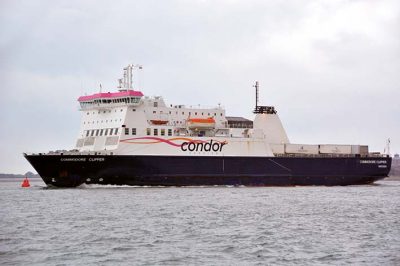

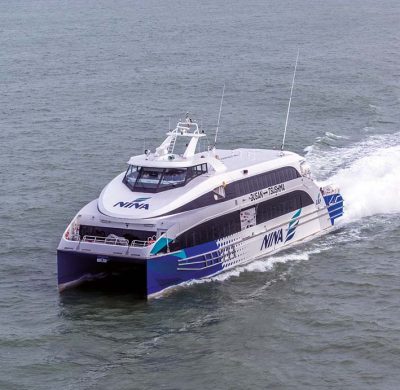
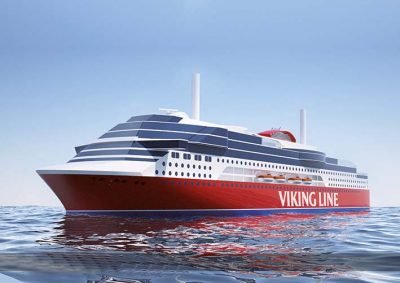
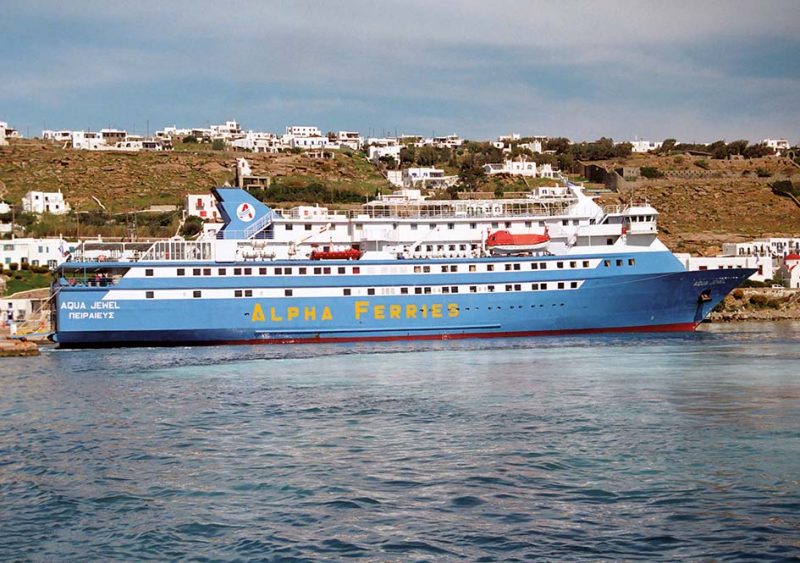
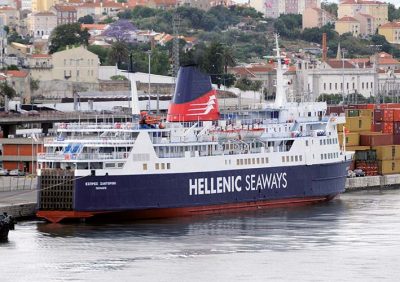





Comments
Sorry, comments are closed for this item